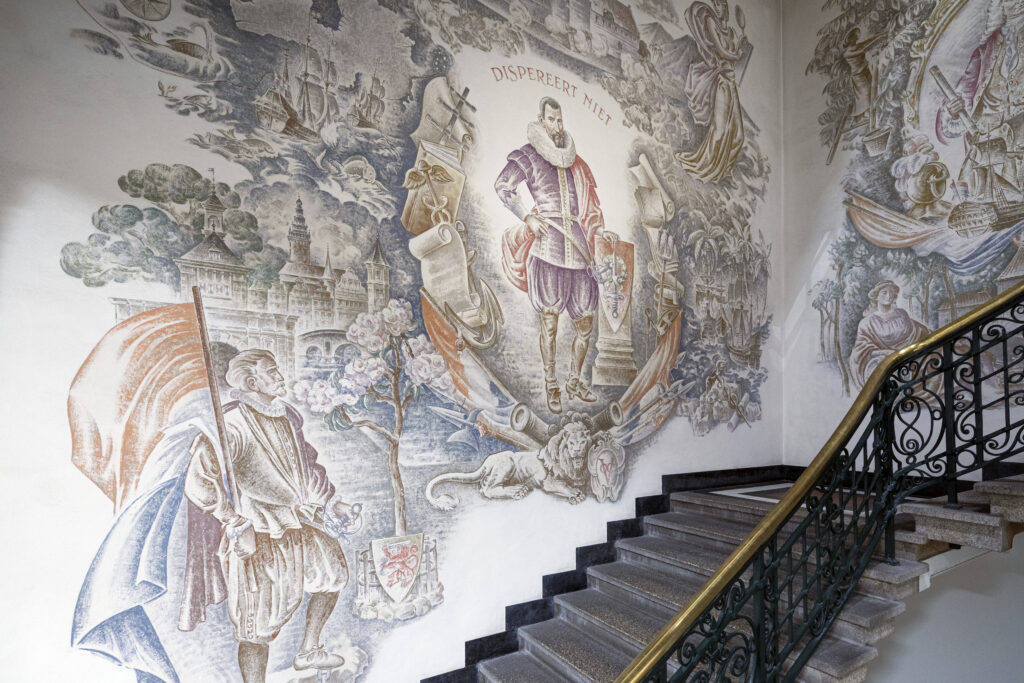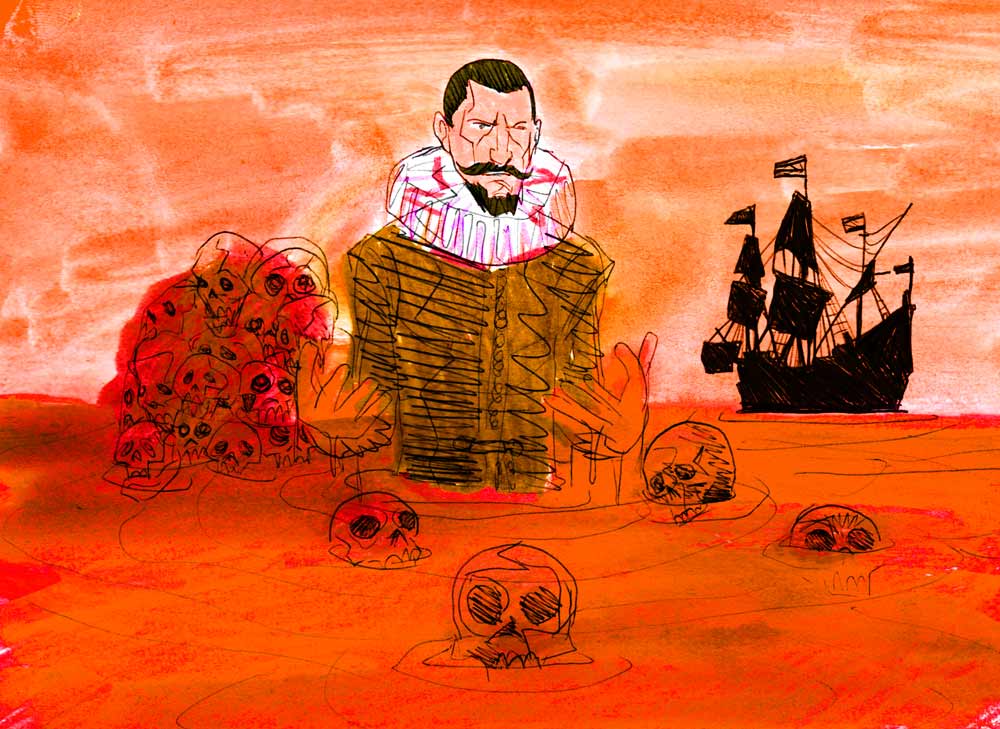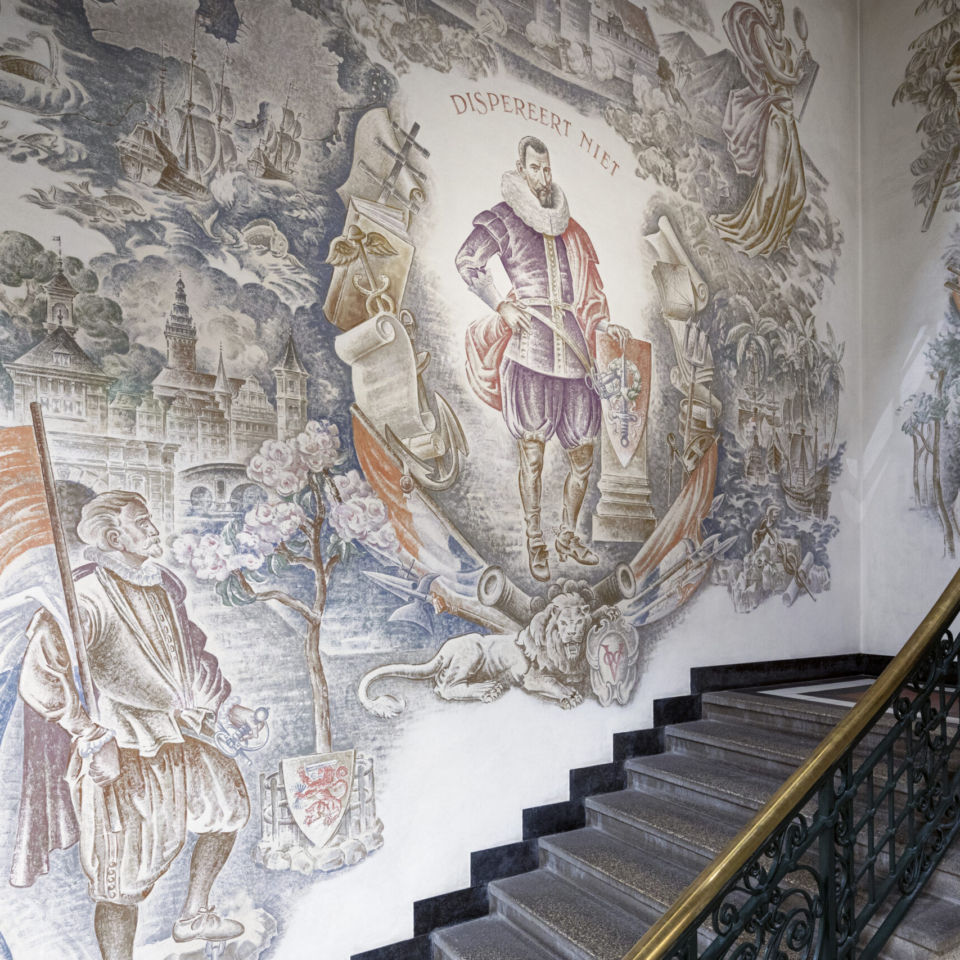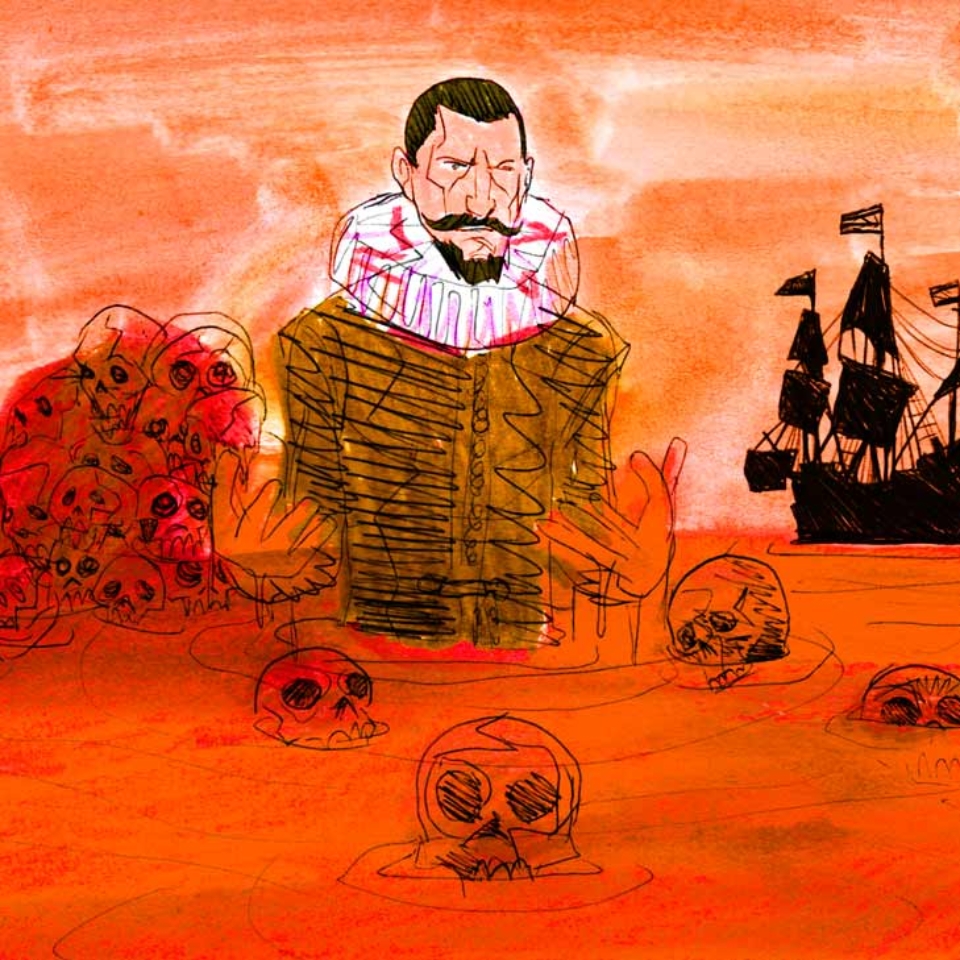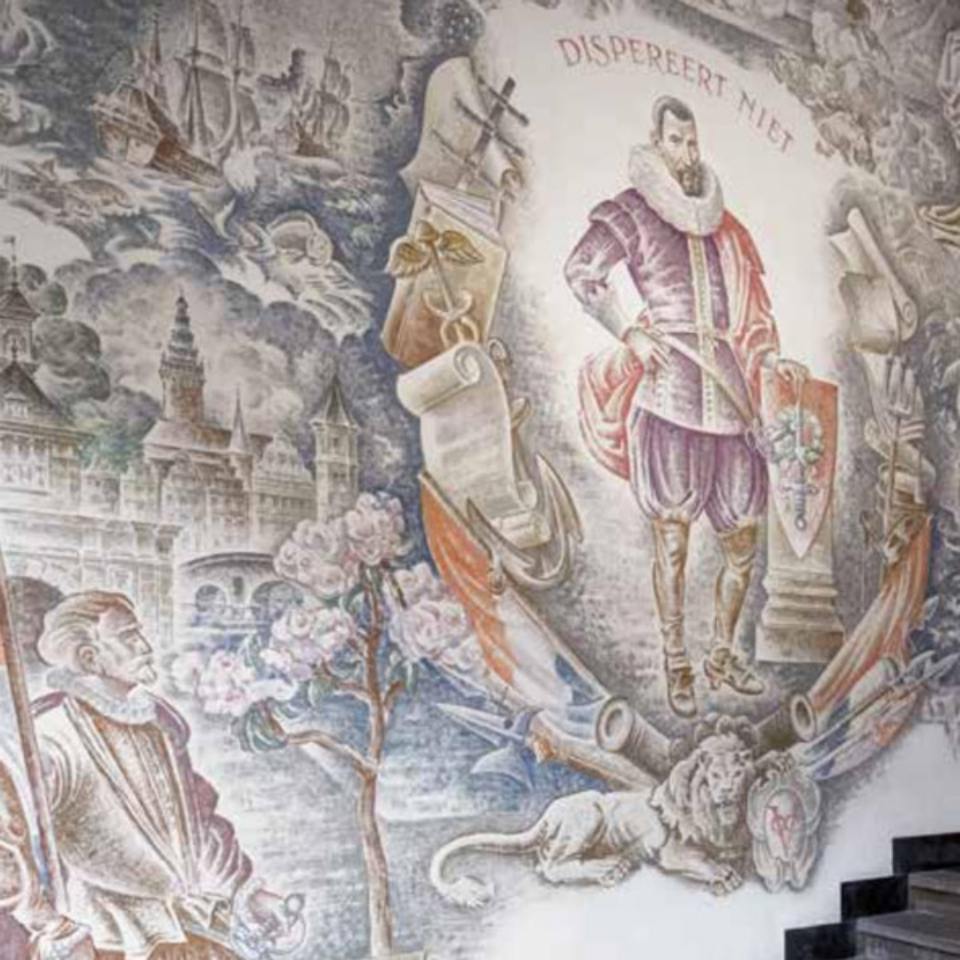By the main Mauritskade entrance, and on the ground floor above the museum elevator, head-only portraits show him as the seventeenth century governor general of the Dutch East Indies.
For a long time, Coen was considered a national hero in the Netherlands, founder of Batavia (now Jakarta) and a symbol of the so-called ‘Golden Age’. Hendrik Paulides adheres to this one-sided view. Coen’s portrait represents the beginning of three centuries of Dutch colonialism. Every landing of the stairs to the other three floors serves to bring history a century closer to the current day. Symbolically, they could even represent steps in Western progressive thought. Those who hired Paulides certainly regarded the colonial past in this light.
Paulides created the fresco when there was no contact with Indonesia, during the time that the Netherlands was under occupation by Nazi Germany and the Japanese were occupying Indonesia. Paulides’s quote of Coens’s ‘Dispereert niet’ (‘Do not despair … greatness is achievable’) may well have been intended to encourage his Dutch contemporaries.14 By now, many people have changed their perspective on Coen. Not only is Coen now seen as a prototype for colonial violence, but at the time Paulides was also unaware that a war of independence would follow Japan’s capitulation. The Netherlands refused to accept the Republic of Indonesia’s unilateral declaration of independence, leading to a decolonialisation process that was accompanied by a use of great military force, huge loss of human life and mass migration. These developments inspired a reassessment of the Koloniaal Instituut’s reasons for existence, and it had to reinvent itself. As it was unclear what would happen after the Netherlands’ liberation, the last portion of the fresco was left unfinished. To this day, a section of the wall remains empty, arguably awaiting the last painting to conclude this colonial history that began with Coen downstairs.
